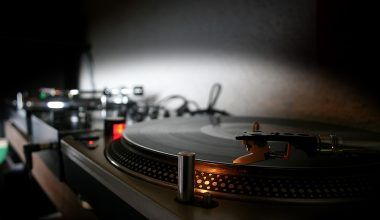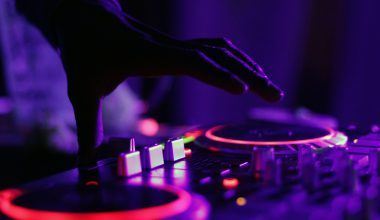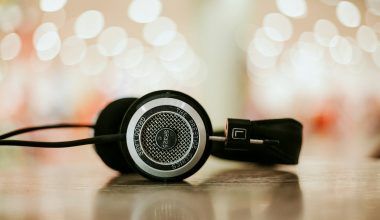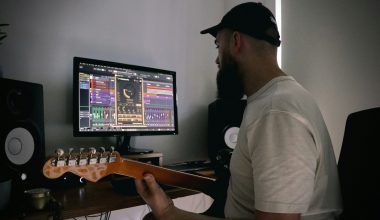Choosing the right DAW (Digital Audio Workstation) is a big step for anyone starting their music production journey. Whether you are a complete beginner, an aspiring musician, or even an experienced producer looking for a change, picking the right DAW can be overwhelming. With so many options available, it’s easy to get lost in technical terms and features. But don’t worry! In this blog, we will help you understand how to choose a DAW that suits your needs.
In this simple, easy-to-read guide, you’ll learn the basics of DAWs, the key things to consider, and how to make a choice that works for you. By the end of this article, you’ll feel confident in picking the perfect software for your music production journey.
What is a DAW, and Why Do You Need One?
Before we jump into how to choose a DAW, let’s take a step back and understand what it is. A DAW stands for Digital Audio Workstation. It’s software that allows you to record, edit, mix, and produce music right on your computer. Think of it as your music studio in digital form.
Whether you want to produce electronic music, record vocals, mix beats, or compose a film score, a DAW is essential. It gives you all the tools you need to create professional-quality music without needing expensive hardware.
Now that you know what a DAW is, let’s dive into how to choose one that fits your goals.
Understand Your Needs First
Before you start researching DAWs, take a moment to ask yourself a few questions:
- What kind of music do you want to make? Are you producing EDM, recording live instruments, or mixing vocals? Different DAWs cater to different styles.
- What is your skill level? If you’re just starting out, you may prefer a DAW that is beginner-friendly. If you’re experienced, you might look for advanced tools.
- What is your budget? DAWs range from free software to expensive professional suites. Set a budget that works for you.
- What hardware do you have? Some DAWs run better on specific systems, like Windows or macOS. Make sure your computer can handle the software.
Answering these questions will make it much easier to narrow down your options and choose the right DAW.
Look for User-Friendly Features
If you’re new to music production, you want a DAW that is easy to use. Look for software with an intuitive layout and clear instructions. Some DAWs offer tutorials or onboarding guides that walk you through the basics.
Popular beginner-friendly DAWs include GarageBand, FL Studio, and Ableton Live Lite. These tools are great for starting out, as they provide simple interfaces without overwhelming you with options.
For more experienced users, DAWs like Logic Pro, Cubase, and Pro Tools offer advanced features and tools for detailed editing.
The bottom line is: Choose a DAW that matches your comfort level. If a software looks confusing, it might slow down your progress.
Compare Features: What Should You Look For?
Every DAW comes with its own unique set of features. Here are some of the most important ones to consider:
1. Recording and Editing Tools
If you plan to record live instruments, vocals, or podcasts, make sure the DAW has good recording tools. It should allow you to record multiple tracks simultaneously and edit audio with precision.
For electronic music producers, features like MIDI editing and virtual instruments are crucial.
2. Mixing and Mastering
Mixing is where you balance all the sounds in your track. Look for DAWs that offer:
- EQ (Equalization)
- Compressors
- Reverb
- Automation
- Mastering tools
These features are essential for giving your music a polished, professional sound.
3. Virtual Instruments and Plugins
Most DAWs come with built-in instruments and effects. For example, Logic Pro has a huge library of virtual instruments, while Ableton Live focuses on electronic music production tools.
Check if the DAW supports third-party plugins (VSTs or AU). These plugins allow you to expand your sound library and tools in the future.
4. Compatibility
Make sure the DAW works well with your operating system. Some DAWs, like Logic Pro, are exclusive to macOS, while others like FL Studio and Ableton Live work on both Windows and Mac.
5. Performance and Stability
A good DAW should run smoothly on your computer. If you have an older system, look for lightweight DAWs like Reaper or GarageBand. Check user reviews to see how stable the software is.
6. Workflow and Interface
The workflow is how you use the DAW to create music. Some software, like Ableton Live, has a unique layout that makes it easy for live performances. Others, like Cubase, have a traditional timeline interface.
Pick a DAW that feels natural and suits your creative process.
Free vs. Paid DAWs: What’s the Difference?
When learning how to choose a DAW, you’ll quickly notice that some are free, and others cost hundreds of dollars. So, what’s the difference?
Free DAWs
Free DAWs are a great way to start if you are on a tight budget. Examples include GarageBand, Cakewalk by BandLab, and Tracktion T7. They offer basic tools for recording, editing, and mixing music. However, free DAWs often have limitations, such as fewer plugins, instruments, or export options.
Paid DAWs
Paid DAWs like Logic Pro, Ableton Live, FL Studio, and Pro Tools come with advanced features, tools, and large sound libraries. They are designed for professional music production and give you everything you need to produce high-quality tracks.
If you are serious about music production, investing in a paid DAW will be worth it in the long run.
Try Before You Buy
Most DAWs offer free trials or demo versions. Take advantage of these to explore the software before making a final decision. Use the trial period to:
- Test the interface
- Check the features
- See if it runs smoothly on your computer
Spending some time with different DAWs will help you understand which one feels right for you.
Popular DAWs to Consider
Here’s a quick list of popular DAWs and who they’re best for:
- FL Studio: Great for beginners and electronic music producers
- Ableton Live: Perfect for live performances and EDM
- Logic Pro: Ideal for Mac users who want professional tools
- Cubase: Best for recording and detailed editing
- Pro Tools: The industry standard for professional studios
- GarageBand: Free and beginner-friendly for Mac users
- Reaper: Affordable, lightweight, and highly customizable
Final Thoughts: Choose a DAW That Works for You
Choosing the right DAW doesn’t have to be complicated. The most important thing is to find software that suits your needs, budget, and skill level. Start with a DAW that feels intuitive and grows with you as you learn.
Remember, there is no “right” or “wrong” DAW. The best DAW is the one that helps you create music comfortably and efficiently. So, try a few options, explore their features, and trust your instincts. Before long, you’ll have found the perfect DAW to bring your musical ideas to life.
Happy music-making!
For further reading, explore these related articles:
For additional resources on music marketing and distribution, visit DMT Records Pvt. Ltd..






